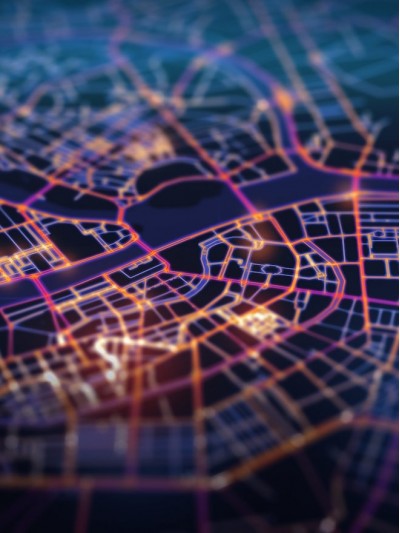
2nd grade master-student,
Resource-efficient production logistics,
Kazakh-German University,
Scientific supervisor – KegenbekovZh.K.,
candidate of technical sciences, associate professor,
Kazakh-German University,
Abstract
The simulation method allows you to build models that describe the processes in the way they would be in reality.
In such a model, you can experiment with event streams and execution times, either for a single case or for a given number of trials. In this case, the results can be recorded and appropriate conclusions can be drawn.
A large class of systems is reduced to queuing systems (QS), which is difficult to investigate using analytical methods. The purpose of this work is the possibility of obtaining indicators for predicting passenger traffic using simulation modeling. To achieve the goal, the following tasks are present:
Certain events affect the transition of the QS from one state to another - the arrival of applications and their processing. The stream of events is formed from a sequence of random occurrences of events that follow, one after another at random times. Often, the actions of the whole system are determined not by one, but by several streams of events at once.
Key words: logistics, modeling, passenger traffic, public transport, transport system.
The transport system evolves annually under the influence of a very large number of unstable factors, which inevitably affects the area of functioning of public transport. The main task of both the city and private enterprises in the field of public transport and transport networks is to create and provide an affordable, reliable, constant and convenient passenger transportation service.
At the moment, the indicator of the organization of passenger traffic is not very good, one can even say that it is bad. Problematic situations in planning transportation are associated with the following factors [1, p. 25]:
All of the above problems are by no means indirectly related to the study of change trends and the creation of passenger traffic, as well as the construction of a forecast of passenger traffic. Simulation and forecasting of passenger flows often include [2, p. 102]:
The administration of any city has and will try to eliminate some routes, not to analyze the situation, not taking into account the indicators of passenger traffic on these routes. This hasty decision of the city administration was canceled, there were no analogues, which caused the need for transfers, increased the cost of passenger travel.
After that they will have to start these routes again, it is hard to imagine how many resources our administration lost in this unsuccessful attempt [3, p. 113].
But if we assume that all changes, before taking effect, would be tested in a simulation environment that can simulate the model of the city's transport hub, then if any route was canceled, we could know the consequences in advance. If we initially knew the number of people who need public transport on a daily basis, then it would be possible to pre-allocate routes by discarding unnecessary ones or adding necessary ones.
AnyLogic software is based on an object-oriented system. This approach to understanding complex systems is one of the best methods for managing the complexity of information today, this theory allows you to show and master the structure of a complex system in a simple and natural way [5].
The result of the work done is a “flexible” model that can easily adapt to the required options. The model is a forecast for the indicators of passenger traffic, which has the ability to regulate the movement of vehicles and pedestrians. This model has the ability to adjust many parameters, which will allow you to select the value for the required situation. Parameters such as:
The transport situation is very often a problem area in the city, a large number of public and personal transport. As a result, there are frequent traffic jams. Also in this area there is a railway station, several shopping centers, for example. And this fact implies a huge passenger traffic Based on the work, a model can be built that operates in three modes. In this work, we consider the general case of pedestrian traffic with arbitrary data, we build a graph of the bus stop. We make a forecast of passenger traffic indicators. We can regulate the number of incoming pedestrians and approaching vehicles.
Such a simulation model makes it possible to understand not only the operation of public transport, but also to forecast the appearance of passengers, which we can obtain based on the given parameters. What can help organize the work of urban transport.
In the future, on the basis of the constructed model, a complete study of the city can be carried out. The following parameters can be changed in the city:
Thus, in the future, with the availability of relevant statistical data, they can be used to build a model of the real situation and correct some negative aspects in the city's transport system. If we know the value of passenger traffic for each individual transport hub, then there will be it is possible to redistribute buses on routes, add or remove if necessary, thereby increasing profits for the city and reducing losses.
Bibliographic list
1. Arrak, AO Socio-economic efficiency of passenger transportation / AO Arrak. - Tallinn: 1982 - 200c.
2. Artynov, A. P. Automation of planning and management of transport systems / A. P. Artynov, V. V. Skaletskiy. - M .: Nauka, 1981 .-- 272 p.
3. Aliev, A.S. Modeling of traffic flows in a large city with application to the Moscow agglomeration / A. S. Aliev, A. I. Strelnikov, V. A. Shvetsov, Yu. Z. Shershevsky // Automation and Telemechanics. - 2005. —No.11. — p. 113-125.
4. Kobelev, NB Fundamentals of simulation of complex economic systems: a tutorial / NB Kobelev. - M .: Delo, 2003 .-- 336 p.
5. Website of the AnyLogic software developer // https://www.anylogic.ru/ (was available on January 8, 2021)